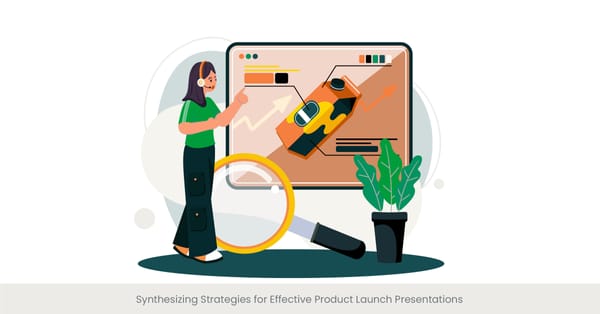
Principles of Audio Visual Design
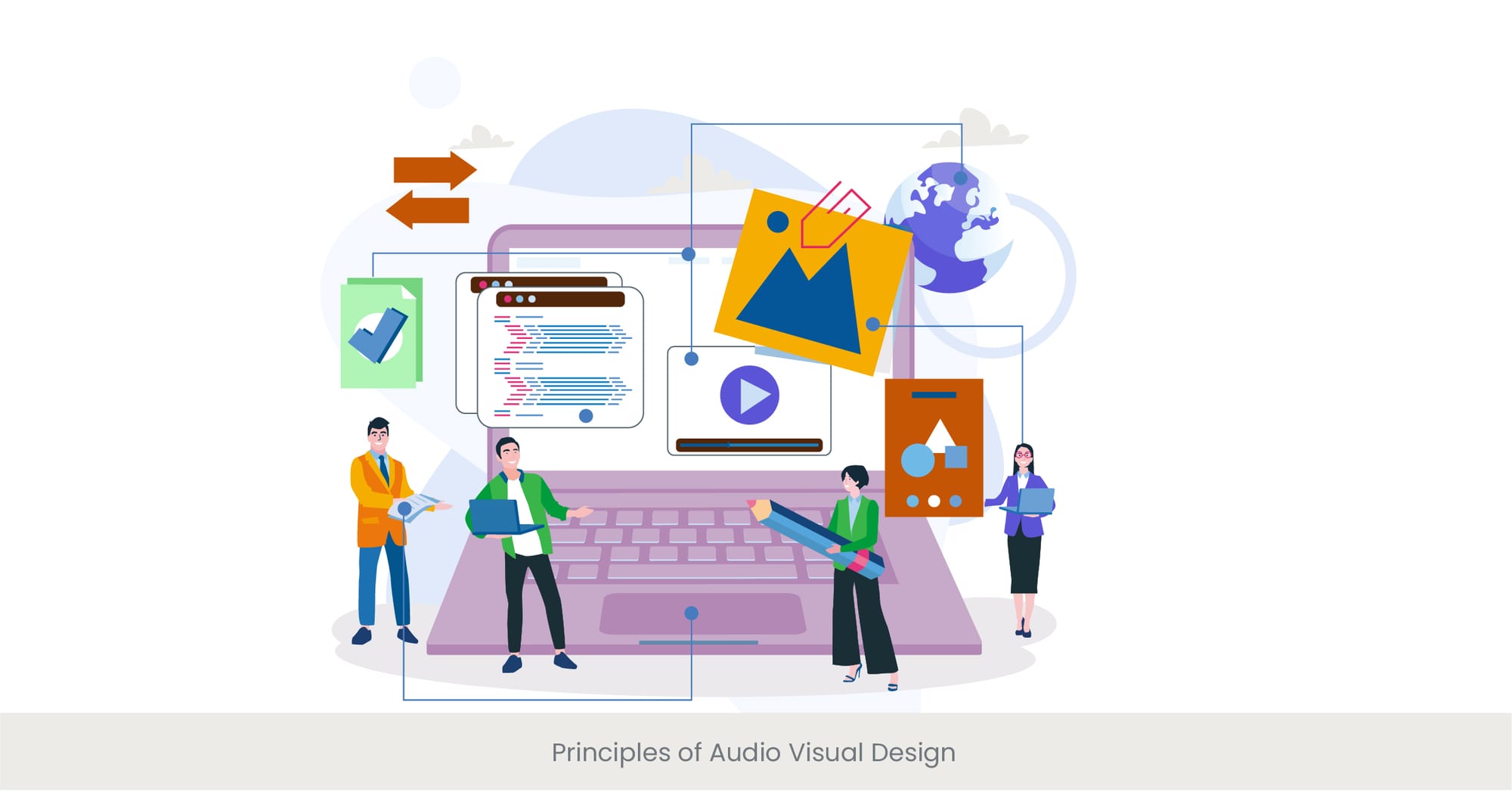
Engaging the Senses: The Foundation of Audio Visual Design for Events
Audio visual (AV) design forms the cornerstone of memorable and successful event and experiences, intertwining sight and sound to captivate attendees. At its core, the principle of AV design for events hinges on creating a sensory environment that not only engages but also resonates with the audience. Whether it's a corporate event or an immersive exhibition, the strategic deployment of audio visual equipment plays a pivotal role in setting the atmosphere and delivering the message. By integrating cutting-edge technology with creative vision, AV design transforms ordinary spaces into extraordinary realms, ensuring every presentation leaves a lasting impression.
For annual gala presentation slides, attention to design details and storytelling is essential. These events typically showcase achievements and visions, requiring elegant visuals to engage a diverse audience. From dynamic motion graphics to visually rich content, a well-designed slide deck amplifies the overall impact of the gala.
The Evolution of AV Design: A Historical Perspective
The journey of audio visual design has been marked by significant technological advancements and evolving audience expectations. From the simple projectors of the early 20th century to today's high-definition LED video walls, the evolution of AV equipment reflects a continual push towards more immersive and interactive experiences. Audio visual services have expanded to include virtual and augmented reality, offering new dimensions of engagement. Historical milestones in AV innovation highlight the industry's adaptability and its relentless pursuit of excellence in event design, underscoring the importance of staying abreast with the latest technology to captivate audiences.
Real-World Applications: Elevating Events with Audio Visual Design
In practice, audio visual design brings concepts to life through meticulous planning and execution. Consider the case of a corporate event where audio visual innovation is leveraged to reinforce brand identity. Through the strategic use of LED video walls displaying dynamic brand content and immersive sound systems that envelop the audience, the event becomes a powerful tool for brand engagement. Similarly, experiential marketing campaigns utilize AV design to create emotional connections, transforming passive observers into active participants. These examples underscore the transformative potential of AV design in crafting unforgettable event experiences.
Establishing Credibility: Insights from Industry Leaders
The efficacy of audio visual design is further validated by research and insights from leading AV design companies. Studies reveal that events incorporating high-quality AV setups see significantly higher levels of attendee engagement and satisfaction. For instance, a survey conducted by an eminent audio visual design company for your event revealed that incorporating interactive elements like touch screens and VR experiences can increase attendee retention rates by up to 30%. These statistics highlight the critical role of AV design in the success of events, making it an indispensable element of modern event planning.
Incorporating Brand Identity into AV Design

Branding Beyond Logos: Audio Visual Design as a Storyteller
In the realm of event planning, incorporating brand identity into audio visual design transcends the mere display of logos and slogans. It's about weaving the essence of the brand into every visual and auditory element, creating a cohesive narrative that speaks volumes about the brand's values and vision. Audio Visual Design for Experiential Marketing plays a critical role in this storytelling process, turning abstract brand concepts into tangible experiences. By carefully selecting audio, audio and visual elements that align with the brand's identity, designers can craft immersive environments that not only showcase the brand but also foster a deeper connection with the audience.
The Blueprint of Brand-centric AV Design
Delving deeper into the mechanics, the integration of brand identity into AV design begins with a thorough understanding of the brand's core attributes – its colors, tones, messaging, and overall personality. This background serves as a blueprint for selecting the appropriate audio visual equipment and technologies. For example, a brand emphasizing innovation might lean towards incorporating augmented reality or projection mapping in their event design, making a bold statement about their forward-thinking ethos. Similarly, a brand with a focus on sustainability could highlight this commitment through the use of energy-efficient LED lighting and digital scenography, minimizing environmental impact while maximizing visual impact.
Collaborator meeting presentations demand clarity and precision. With multiple stakeholders, these presentations ensure streamlined communication, using visual aids to foster discussion and decision-making. Well-structured slides help simplify complex ideas, ensuring everyone is on the same page, promoting collaboration, and driving forward organizational goals effectively.
See how we’ve transformed team presentations in our guides.
Spotlight on Success: Case Studies of Brand Identity in AV Design
Real-world examples further illustrate the power of AV design in brand storytelling. Consider a high-profile product launch where the audio visual event setup included a 360-degree video presentation, enveloping attendees in the brand's journey and product evolution. Another case involved an interactive LED video wall that invited attendees to engage with the brand's history through touch, enhancing their understanding and appreciation of the brand's heritage. These instances demonstrate how innovative audio visual design can transform a corporate event into a compelling narrative that resonates with the audience on a personal level.
Evidence of Impact: Research and Feedback from the Field
Supporting the significance of brand identity in AV design, industry research and feedback underscore its impact on audience perception and engagement. A study by a leading Audio Visual Design Company for Your Event found that events featuring customized AV designs aligned with the brand's identity reported a 40% increase in attendee engagement compared to standard setups. Furthermore, post-event surveys consistently highlight the role of personalized audio visual experiences in enhancing brand recall and loyalty, providing tangible proof of the strategy's effectiveness.
Experiential Marketing Through AV Innovation
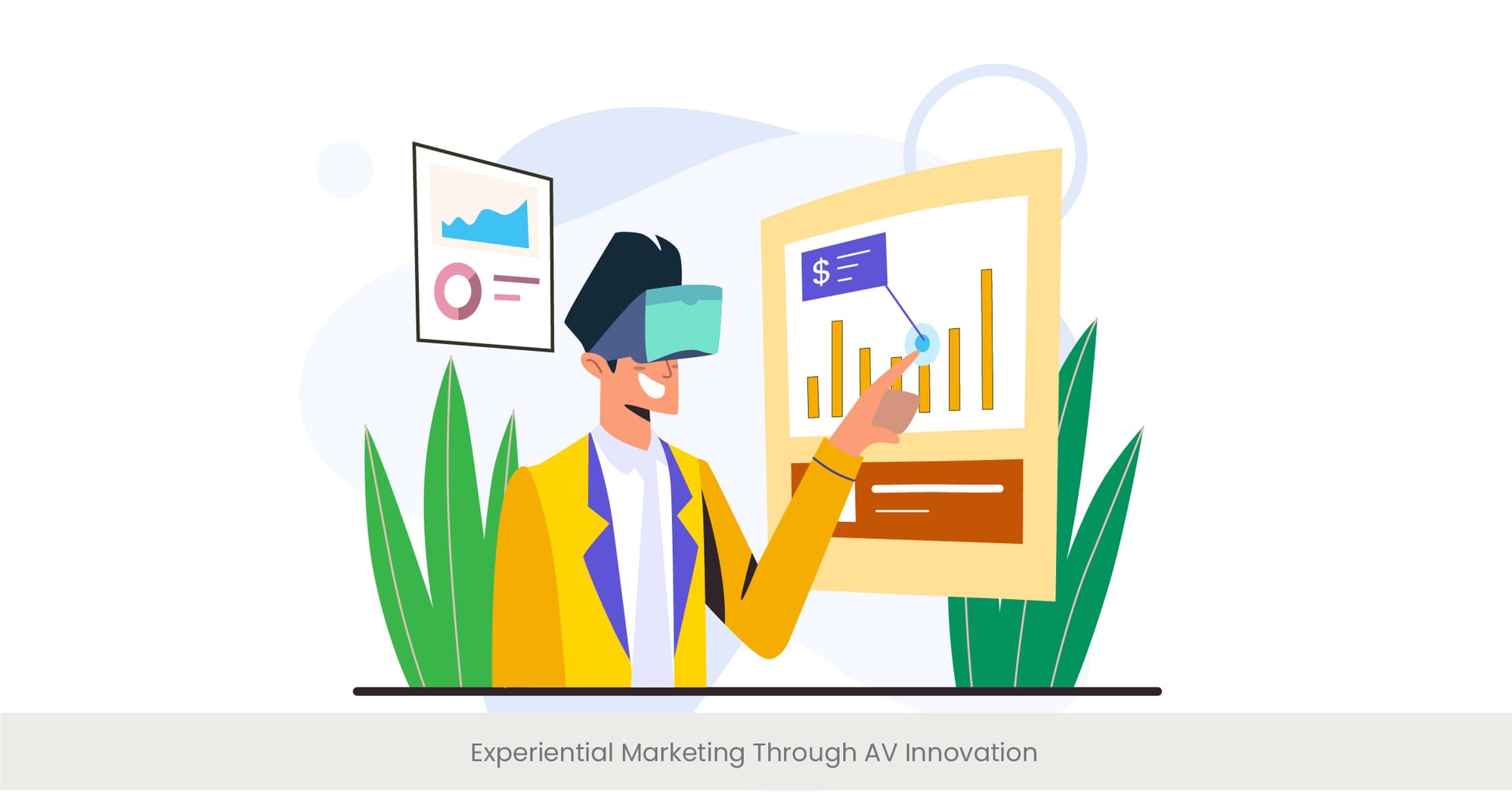
Creating Connections: The Role of AV in Experiential Marketing
In the dynamic landscape of experiential marketing, Audio Visual Innovation for Events serves as a bridge between brands and their audiences, creating immersive experiences that foster lasting connections. The essence of experiential marketing lies in engaging consumers beyond traditional advertising, inviting them into interactive environments where they can experience the brand firsthand. Through innovative AV design, events become more than just gatherings; they transform into sensory journeys and unforgettable moments that captivate the imagination and stir emotions, leaving a durable imprint on the participants' minds.
The Evolution of Experience: A Deep Dive into AV Innovations
As technology advances, so do the possibilities for experiential marketing. The introduction of cutting-edge audio visual services has propelled the event industry into a new era of engagement. Virtual and augmented reality, for instance, have opened up avenues for creating hyper-realistic experiences that blur the lines between the digital and physical worlds. High-quality sound systems and visually stunning video walls further enhance these experiences, making every event a unique opportunity to interact with the brand in meaningful ways. This evolution underscores the importance of staying ahead of the curve in AV technology to truly captivate and engage today's tech-savvy audiences.
Illustrating Success: Innovative Experiential Marketing Campaigns
The power of AV innovation in experiential marketing is best exemplified through real-world campaigns that have left a mark on the industry. One notable example is a launch event for a new smartphone, where attendees could explore the phone's features through an augmented reality scavenger hunt, turning the event space into an interactive playground. Another campaign utilized a massive LED video wall to create an immersive environment that simulated different weather conditions, showcasing the durability of outdoor gear. These campaigns demonstrate the potential of AV innovations to create memorable experiences that not only entertain but also deeply engage the audience with the brand.
Validating the Experience: Insights and Statistics
Research and feedback from both brands and attendees highlight the effectiveness of AV-driven experiential marketing. Surveys indicate that events leveraging audio visual innovation for experiential marketing achieve significantly higher engagement rates, with participants reporting a more profound connection to the brand. Furthermore, data from an audio visual design and production company for your event shows that incorporating immersive AV elements into small events can lead to a 50% increase in social media mentions and shares, amplifying the brand's reach and impact. These insights affirm the critical role of AV innovation in creating successful experiential marketing campaigns that resonate with audiences and amplify brand visibility.
Interactive Elements in Event Design

Interactivity as a Catalyst for Engagement
In the world of event design, interactive elements are revolutionizing the way attendees experience and engage with presentations. The incorporation of Audio Visual Design for Experiential Marketing has made it possible to create environments that are not just visually captivating but also invite active participation. This shift towards interactivity seeks to transform attendees from passive observers to active participants, fostering a more engaging and memorable event experience. By leveraging technologies such as touch screens, motion sensors, and interactive video walls, event designers can craft bespoke experiences that encourage exploration, discovery, and connection.
The Backbone of Interactive Design: Technology and Creativity
The fusion of advanced AV technology with creative vision is what drives the success of interactive event design. From virtual reality (VR) setups that transport attendees to another world, to augmented reality (AR) applications that overlay digital information onto the physical environment, the possibilities are endless. The key is to utilize audio visual equipment and technologies that align with the event’s objectives and enhance the overall theme. For example, an event aimed at showcasing a new software could include interactive demos and live Q&A sessions facilitated through various AV services and solutions, making the content more accessible and engaging for the audience.
Showcase of Innovation: Highlighting Interactive Event Successes
Examples of successful interactive event designs abound, illustrating the potential of AV technology to create deeply engaging experiences. A tech conference might feature an interactive LED video wall where attendees can navigate through different topics of interest using gesture control, creating a personalized content journey. Another event could offer VR stations where participants can experience a brand’s services in a fully immersive environment, strengthening their connection to the brand. These instances underscore the transformative power of integrating interactive elements into event design, offering attendees not just information, but an unforgettable experience to remember.
Interactive Design in Numbers: The Impact on Engagement
The effectiveness of incorporating interactive elements into event design is backed by compelling data. Studies conducted by leading event production companies reveal that events featuring interactive AV setups see a significant increase in attendee engagement and satisfaction. For instance, events utilizing interactive touchscreens and VR experiences report a 40% higher interaction rate compared to those with traditional, passive AV setups. Furthermore, post-event surveys often highlight the role of interactivity in enhancing attendee recall of the specific event, and the brand, proving that interactive elements are not just a novelty but a necessity in creating impactful and memorable event experiences.
The Impact of Digital Scenography
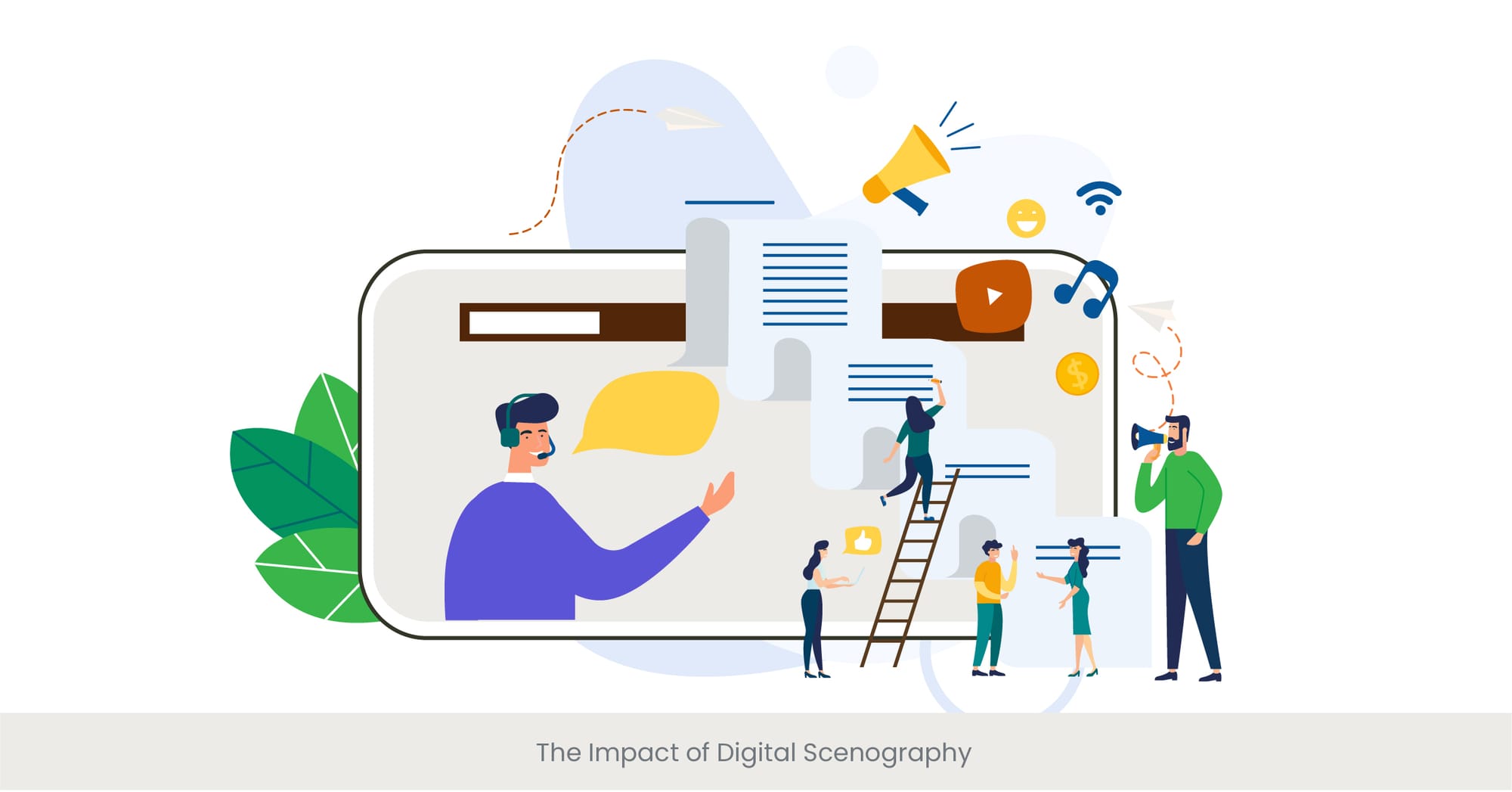
Redefining Event Spaces with Digital Scenography
Digital scenography, a revolutionary aspect of audio visual design for events, has transformed the way event spaces are conceptualized and experienced. This innovative approach to scenic design leverages digital technologies to create immersive environments that captivate the audience's attention and imagination. By integrating projection mapping, LED displays, and virtual reality, digital scenography goes beyond traditional decoration, offering a dynamic canvas that can adapt to various themes and narratives. This fluidity allows event designers to craft unique atmospheres that enhance the storytelling aspect of presentations, making every event a memorable journey for its participants.
The Evolution of Scenic Design: From Static to Dynamic
The transition from static backdrops to dynamic digital landscapes represents a significant shift in event stage design. Historically, scenic design was limited by physical constraints and the immobility of structures. However, the advent of audio visual innovation for events has ushered in an era where scenes can evolve in real-time, responding to the flow of the event or the interactions of the audience. This evolution not only enriches the visual experience but also adds a layer of engagement, as attendees witness the environment transforming around them. Digital scenography has thus become a vital tool in creating adaptive and responsive event spaces that can truly reflect the essence of the presentation or brand.
Spotlight on Success: Digital Scenography in Action
Real-world applications of digital scenography illustrate its profound impact on event experiences. One notable example is a corporate gala where the walls were adorned with high-resolution LED screens, displaying a continuous narrative that complemented the evening's speeches and performances. Another instance saw a conference hall transformed into a dynamic ecosystem, with projection mapping creating the illusion of changing weather patterns overhead, immersing attendees in the theme of environmental sustainability. These examples highlight how digital scenography can be leveraged to create deeply immersive environments that elevate the overall event experience.
Quantifying the Impact: Statistics and Feedback
The effectiveness of digital scenography in enhancing event experiences is supported by compelling evidence. Surveys conducted post-events have shown that presentations incorporating digital scenography elements score significantly higher on attendee engagement and satisfaction metrics. For instance, events utilizing projection mapping and dynamic lighting have reported a 30% increase in attendee engagement compared to traditional setups. Furthermore, feedback from attendees often emphasizes the enhanced emotional connection felt during these events, underscoring the importance of digital scenography in creating engaging and impactful presentations.
Recognition ceremony decks highlight milestones and achievements in a memorable way. These decks not only honor individuals but also reflect an organization's values and success. By integrating personalized visuals, audience engagement increases, making the ceremony more impactful and inspiring for all attendees.
Need presentation design support for your next ceremony?
Get In Touch
Designing for Different Types of Venues
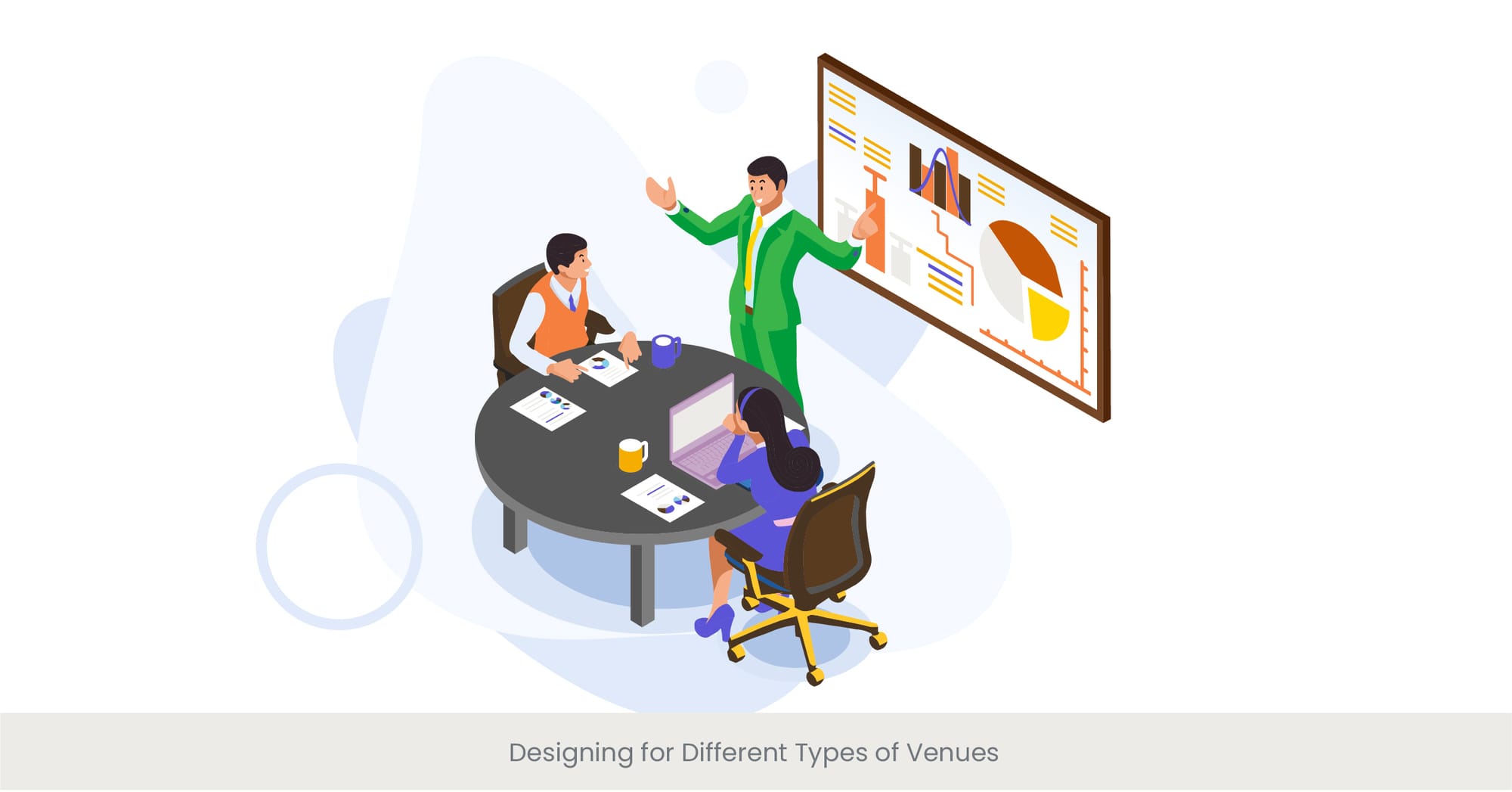
Tailoring AV Design to Venue Specifics
The challenge and art of Audio Visual Design for Events lie in its adaptability to various types of venues. Each space, whether a grand hall, an intimate conference room, or an outdoor setting, presents unique opportunities and constraints for AV design. The key to success is a bespoke approach that considers the venue's acoustics, layout, and ambiance. By customizing audio visual setups to match the venue's characteristics, designers can enhance the event's impact, ensuring that the audio-visual elements complement rather than conflict with the space. This tailored approach not only optimizes the sensory experience for attendees but also showcases the versatility and precision of modern AV design.
Navigating the Nuances of Venue Types
The process of adapting AV design to different venues involves a deep understanding of each space's unique features. For indoor events, considerations include the natural acoustics of the room, the availability of mounting points for equipment, and the impact of lighting on visual displays. Outdoor venues, on the other hand, pose challenges related to weather conditions, ambient noise, and the need for robust equipment that can withstand the elements. By addressing these variables, AV designers can create environments that resonate with the setting, whether it's leveraging the natural echo of a cathedral for a concert or ensuring clarity of sound at an open-air exhibition.
Showcasing Versatility: Venue-specific AV Success Stories
The effectiveness of venue-adapted AV design is best illustrated through case studies. For instance, a corporate event held in a historic library utilized discreet audio visual equipment that preserved the venue's aesthetic while delivering clear sound and engaging visuals. Another example is an outdoor brand launch that employed weather-resistant LED video walls and directional sound systems to combat the challenges of the outdoor environment, ensuring a seamless presentation. These examples highlight the AV designer's skill in balancing technical requirements with the unique demands of each venue, ensuring the event's vision is realized without compromise.
The Evidence of Adaptability: Insights from Diverse Venues
Feedback and data from events across a spectrum of venues underscore the importance of tailored AV design. Events that have taken the venue's characteristics into account report higher levels of attendee satisfaction and engagement. Surveys reveal that customized audio visual setups can increase attendee engagement by up to 25%, with particular praise for events that effectively mitigate venue-related challenges. This data highlights the critical role of adaptability in AV design, affirming that the thoughtful integration of audio visual elements according to the venue and client's requirements and specifics is key to creating impactful and memorable events.
Using AV to Create Emotional Connections

The Emotional Power of Audio Visual Design
In the quest to create memorable events, the ability of Audio Visual Design for Events to forge emotional connections with attendees stands out as a pivotal strategy. At its essence, AV design is not just about the technical delivery of sound and visuals but about crafting experiences that resonate on an emotional level. By thoughtfully integrating audio and audio visual production elements, event designers can evoke specific feelings, from excitement and curiosity to empathy and reflection. This emotional engagement is crucial for events aiming to leave a lasting impact, as it transforms the event from a mere presentation into an experiential journey that attendees will remember and cherish.
Harmonizing Technology with Human Emotion
The process of using AV to create emotional connections involves a harmonious blend of technology and psychological insight. The choice of colors, lighting intensity, sound pitch, and visual content can all be strategically designed to align with the the event planner's emotional objectives. For instance, warm lighting and soft background music can create a welcoming and intimate atmosphere, while dynamic visuals and upbeat audio can energize and excite the audience. The key is to understand the emotional palette of the event planner and how different AV elements can be orchestrated to enhance these feelings, making the experience deeply personal and engaging.
Emotional Engagement in Practice: Real-World Examples
Examples of successful emotional engagement through AV design abound in the events industry. One notable instance involved an immersive theatre production where projection mapping and surround sound were used to transport the audience to various settings, evoking a range of emotions that deepened the narrative's impact. Another example is a charity gala where poignant video testimonials were paired with evocative lighting, creating a powerful emotional appeal that spurred attendees to action. These cases underscore the effectiveness of AV design in amplifying the emotional depth of events, making them more impactful and meaningful.
Measuring the Impact: Emotional Connections and Event Success
The impact of creating emotional connections through AV design is not just anecdotal; it is measurable and significant. Surveys and feedback from events with a strong emotional AV component show higher levels of attendee satisfaction and engagement. Moreover, events that successfully evoke emotions tend to have a more substantial word-of-mouth impact, leading to increased brand loyalty and advocacy among participants. Studies have shown that attendees are more likely to remember and share experiences that made them feel a strong emotional connection, highlighting the importance of integrating emotional elements into AV design for achieving lasting event success.
The Future of Immersive Event Experiences
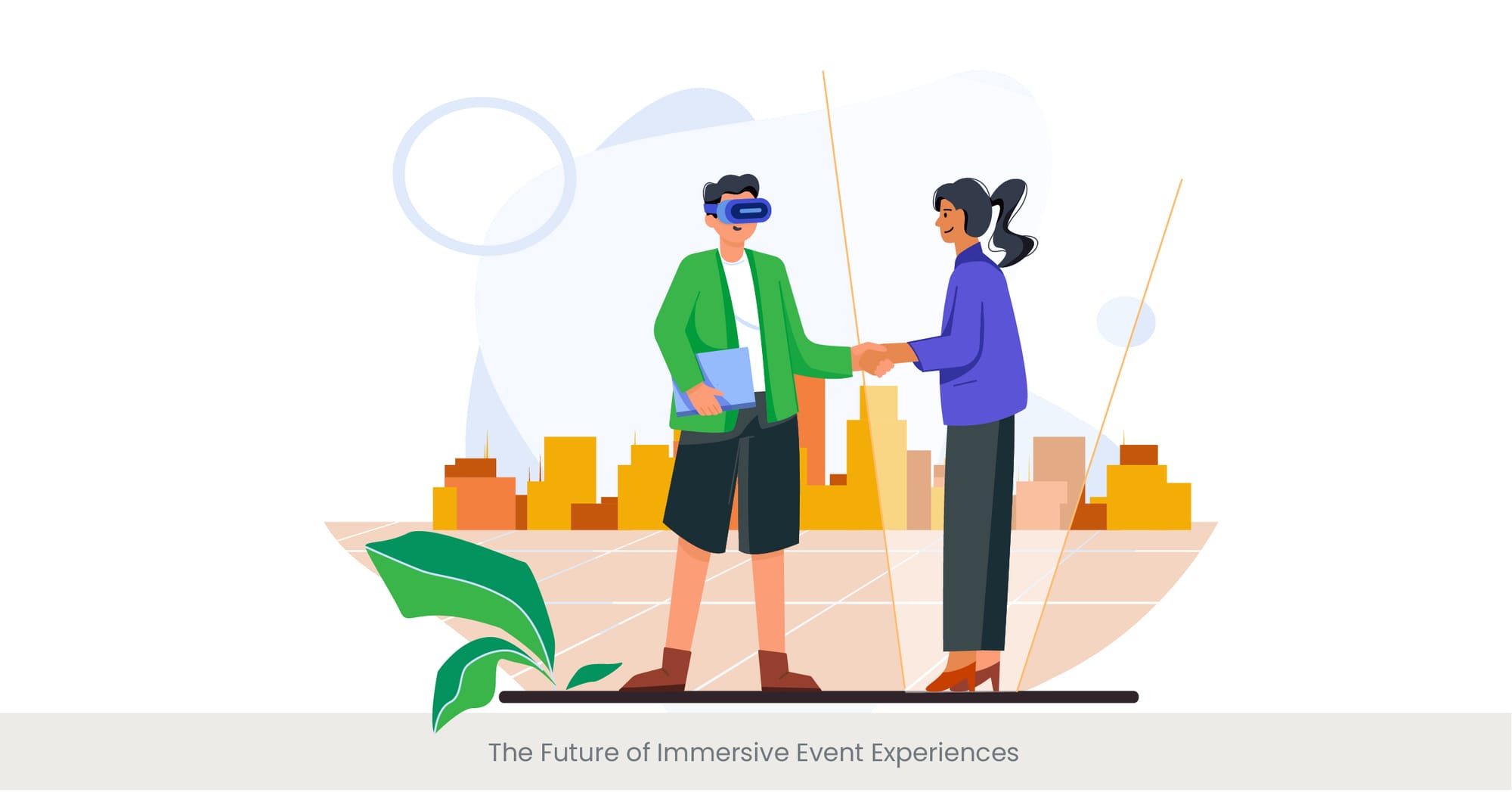
Envisioning the Next Generation of Events
The trajectory of Audio Visual Innovation for Events is steering towards an unprecedented era of immersive experiences, where boundaries between the physical and digital worlds blur. As technology advances, the future of event design promises to deliver even more captivating and interactive environments. These forward-looking experiences will not only engage the senses but also personalize attendee interaction with virtual events to an extent previously unimaginable. Leveraging emerging technologies like extended reality (XR), holography, and AI-driven content, the next generation of events is set to redefine what it means to be truly immersive, offering attendees not just a seat at the event but a role within it.
Technological Pioneers Shaping the Immersive Landscape
The advancement of immersive event experiences is being propelled by breakthroughs in audio visual technology. Virtual and augmented reality are already paving the way for more engaging experiences, but the future holds even greater potential. Innovations in spatial audio, for instance, promise to create soundscapes that are indistinguishable from reality, enveloping attendees in a 360-degree auditory experience. Similarly, advancements in projection mapping and LED technology are expected to deliver visuals with unprecedented depth and realism, making digital environments feel as tangible as the physical space around us. These technologies, combined with AI's ability to customize experiences in real-time, are the building blocks of the next wave of immersive events.
Imagining Future Events: From Concept to Reality
The potential applications of these emerging technologies are vast and varied. Imagine an event where attendees can interact with holographic video presentations, or navigate through virtual environments tailored to their interests. A conference could feature keynote speeches delivered by holograms of speakers from around the world, offering a global perspective without the need for travel. An art exhibition might employ augmented reality to bring artworks to life, allowing visitors to explore the history and context behind each piece. These scenarios illustrate the transformative potential of AV innovation in creating event experiences that are not just seen and heard but felt and lived.
The Tangible Benefits of Immersive Experiences
The move towards more immersive event experiences is not just about leveraging the latest technology; it's about deepening the connection between attendees and the content. Research indicates that immersive experiences can significantly enhance learning outcomes, increase attendee satisfaction, and foster a stronger sense of community among participants. Events that offer a high degree of interactivity and personalization provide attendees are shown to leave a more lasting impression, driving higher levels of engagement and recall. As we look to the future, the value of immersive events lies in their ability to create meaningful, memorable experiences that resonate on a personal level, setting a new standard for what it means to attend an event.
Case Studies: Innovative Event Designs
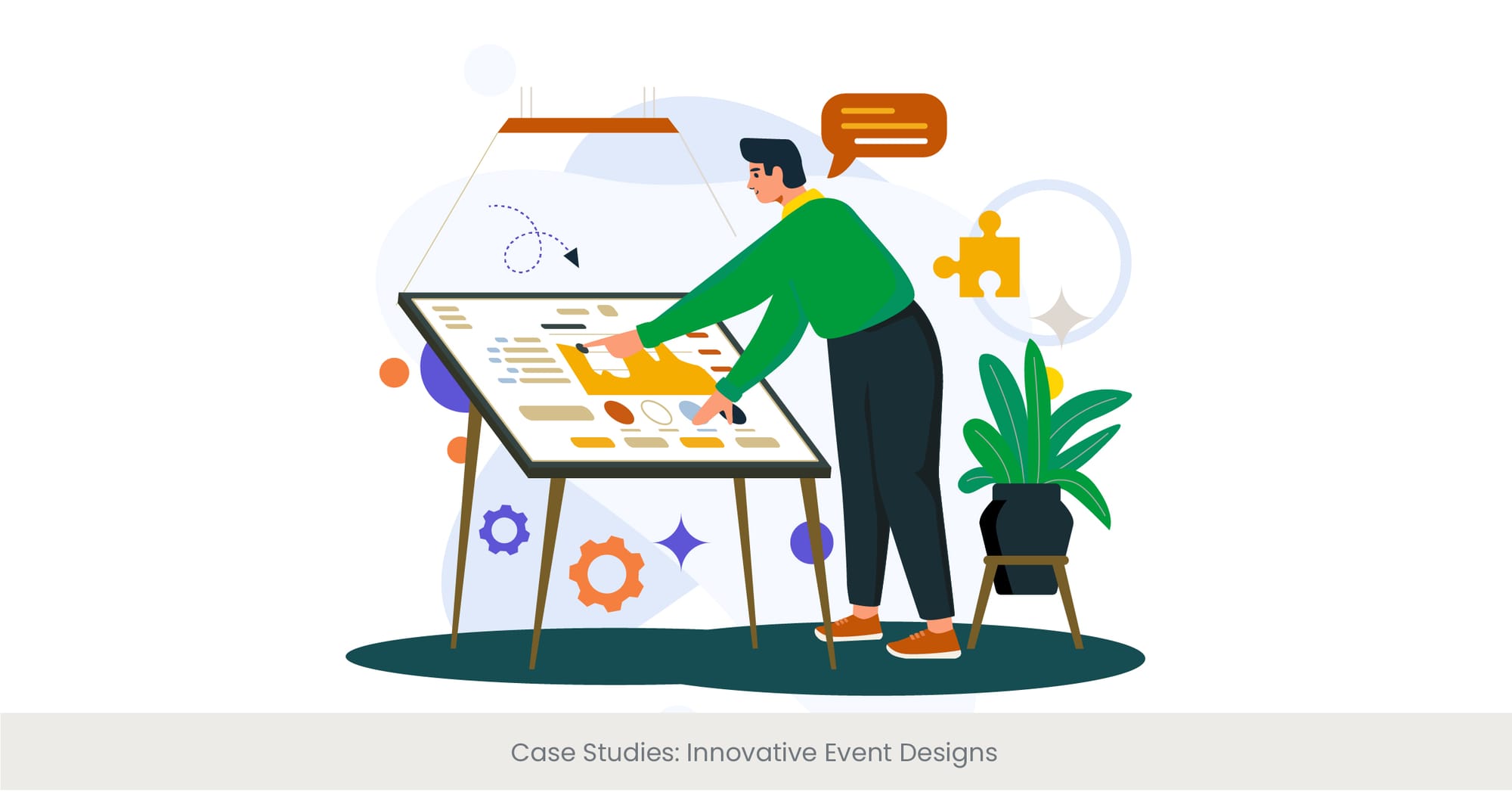
Showcasing Excellence in AV Innovation
The realm of event design has witnessed remarkable transformations, largely attributed to the pioneering use of audio visual technology. By using other trends and examining specific case studies of innovative event designs, we gain insights into the practical application of these technologies and the profound impact they have on audience engagement and event success. These examples serve as a testament to the creativity and technical expertise of event planners and audio visual design companies, showcasing how cutting-edge AV solutions can elevate an otherwise seamless event experience from ordinary to extraordinary.
Multi-city event presentations must maintain consistency across all venues while also being tailored to diverse audiences. Coordinated designs, cohesive narratives, and adaptable formats ensure that key messages are communicated effectively in each location, creating a seamless and professional event experience, regardless of the city.
Conference presentation designs are vital for conveying expertise and authority in any field. These slides must capture attention, convey key points clearly, and encourage audience interaction. Thoughtful design ensures that speakers can present their insights effectively, leaving a lasting impression on industry professionals and peers alike.
Explore our case studies for more impactful presentations.
View Case Studies
Transforming Spaces and Perceptions
One standout example involves the use of projection mapping at a major product launch. The event team transformed a conventional conference hall into a dynamic landscape, where the walls dance floor and ceiling became canvases for a stunning visual narrative that complemented the product's features. This immersive approach not only a memorable experience that captivated the audience but also reinforced the product's innovative qualities, leaving a lasting impression on attendees.
Another case study highlights the integration of augmented reality (AR) at a trade show, allowing visitors to interact with 3D models of the products through their smartphones. This interactive element not only enhanced the visitor experience but also provided a deeper understanding of the products' capabilities, setting a new benchmark for engagement at trade shows.
Engagement Through Sensory Experiences
A music festival utilized a combination of high-quality sound and video, powerful audio and systems, and visually arresting LED video walls to create an unparalleled auditory and visual experience. The careful synchronization of audio-visual elements with the performances elevated the sensory experience, fostering a deep emotional connection between the audience and the music.
Validating Success Through Data
The success of these innovative event designs is further underscored by data and feedback from attendees. Post-event surveys from the product launch with projection mapping reported a 50% increase in product interest and recall among attendees compared to previous events. Similarly, the trade show featuring AR interaction observed a 40% uptick in booth visits and engagement metrics. These case studies not only illustrate the potential of AV innovation to transform event experiences but also highlight the tangible benefits in terms of engagement and brand perception.
Get started with INK PPT’s expert presentation services today.
Work With Us
FAQs

How is audio visual used at an event?
Audio visual (AV) technology is employed at events to enhance the overall experience for attendees through the use of sound, lighting, video, and interactive elements. It includes everything from basic microphone and speaker setups for clear audio delivery to complex LED video walls and projection mapping for dynamic visuals. The goal is to create an engaging atmosphere that supports the event's theme and objectives, whether it's a corporate event, a trade show, or an immersive experiential marketing campaign.
What is audio visual design?
Audio visual design refers to the process of integrating audio, video, and lighting technology to create an environment that enhances the communication of a message or the storytelling of an event. It involves careful planning and execution to ensure that the AV elements support the event's goals, engage the audience, and create memorable experiences. Effective AV design considers the specifics of the venue, the audience's needs, and the event's thematic elements to craft cohesive and impactful presentations.
What are the different types of the audio equipment and audio visual setup and equipment that can be used for events?
The types of audio visual equipment used for events can vary widely depending on the event's scale event budget, event type itself, and objectives. Common AV equipment includes microphones, speakers, mixers, projectors, screens, LED video walls, lighting rigs, cameras for live streaming, and interactive technologies like touchscreens and VR headsets. Advanced setups might also incorporate augmented reality, holographic displays, and custom-built interactive installations to further engage attendees.
What does AV stand for in an event setting?
In an event setting, AV stands for Audio Visual. It encompasses the use of both sound (audio) and sight (visual) elements to create presentations, displays, or environments that enhance the event experience. AV technology plays a critical role in conveying messages, creating atmospheres, and engaging audiences, making it a foundational aspect of modern event design and production.
What is the new audio visual technology?
New audio visual technology in the event industry includes advancements such as augmented reality (AR) and virtual reality (VR) experiences, holographic projections, high-resolution LED video walls, immersive sound systems, and interactive digital installations. These technologies offer new ways event organizers to engage and captivate audiences, allowing for more personalized and immersive event experiences.
What is audio visual activities?
Audio visual activities at events refer to interactive experiences that leverage AV technology to further engage audiences and participants. These can include interactive workshops, virtual reality explorations, augmented reality games, live polling, Q&A sessions with real-time feedback, and participatory art installations. These activities utilize AV tools to create more dynamic and engaging experiences for attendees.
What are the four (4) basic components of audio visual communication?
The four basic components of audio visual communication are:
Audio (sound) - includes speech, music, and sound effects.
Visual (sight) - encompasses video, lighting, and visual effects.
Content - the message or information being conveyed.
Interaction - the means by which the audience engages with the AV content, which can range from passive observation to active participation.
Why is audio-visual arts important?
Audio-visual arts are important because they enhance communication and storytelling by engaging multiple senses, thereby increasing understanding, retention, and emotional impact. In the context of corporate events, AV arts play a crucial role in creating immersive environments, reinforcing brand messages, and facilitating interactive experiences that leave lasting impressions on attendees.
What is AV technology?
AV technology refers to the equipment right technology, systems, and processes used to manipulate sound and visual elements for communication and entertainment purposes. In events, AV technology includes the hardware, equipment rental and software used for delivering audio presentations, visual displays, lighting effects, and interactive experiences, all designed to enhance the overall impact of the event.

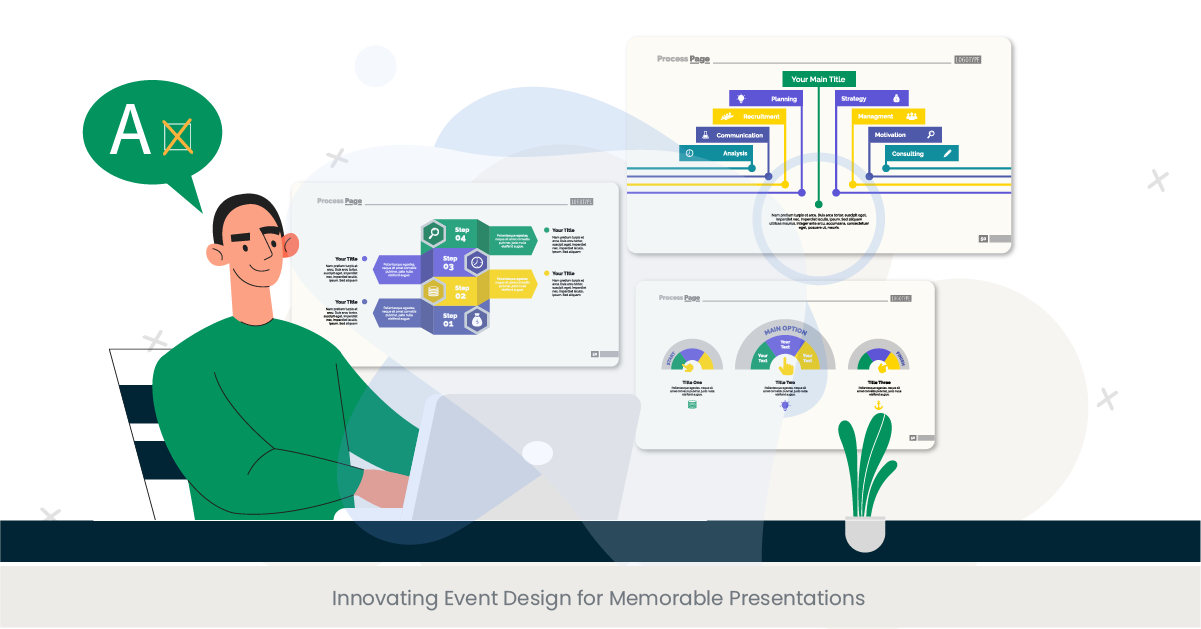

%20(1).jpg)
%20(1).jpg)

